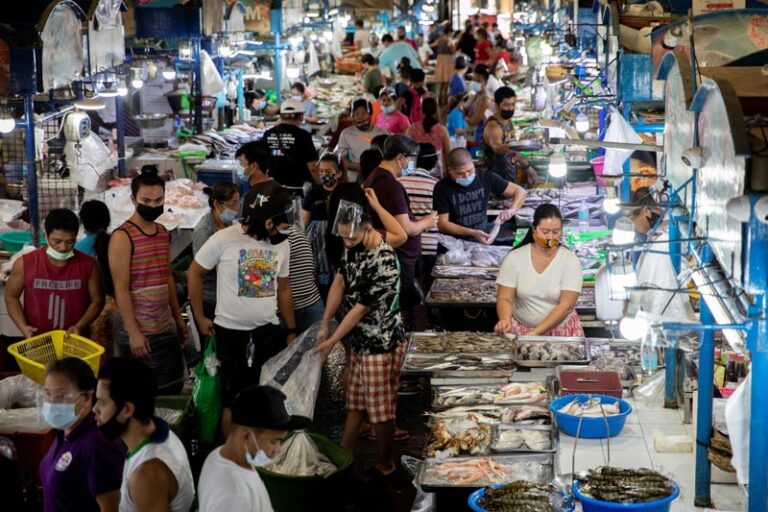Inflation in the Philippines has calmed down considerably since its peak last year, yet economic worries continue to linger. As Filipinos face rising costs, obtaining loans – like those offered by services such as Cashmum – may seem like a necessary solution. However, understanding the complexities driving inflation will reveal why such short-term measures need long-term economic support.
A Tale of Progress and Persistence
The Philippines has made significant strides in taming inflation. After reaching a peak of 8.7% in January 2023, inflation has steadily declined, settling at 2.8% by January 2024. This achievement brings relief to Filipino households grappling with the burden of rising living costs. However, the journey toward price stability is far from over, with persistent challenges, notably within the rice market, keeping inflation slightly above the desired range.
The Rice Dilemma
Rice holds a central position in Filipino culture and diet, making it a critical component of the inflation equation. Several factors contribute to the persistent inflationary pressures in the rice sector:
- Climate Disruptions: The El Niño weather phenomenon and frequent typhoons pose a constant threat to agricultural production, especially rice cultivation. These climate events lead to reduced crop yields, supply disruptions, and subsequent price surges.
- Global Market Dependencies: The interconnectedness of international markets means that external factors such as global rice shortages and supply chain disruptions directly impact local rice prices. This highlights the Philippines’ vulnerability as a rice-importing nation.
- Ambitions vs. Reality of Self-Sufficiency: Attempts to become fully self-sufficient in rice production have encountered several obstacles such as geographic limitations and historical production shortfalls. Consequently, the country remains partially reliant on rice imports to meet domestic demand.
Addressing these challenges requires a multifaceted approach that integrates both short-term measures and long-term investments in agricultural resilience.
Managing inflation demands a delicate balance between stimulating economic growth and preserving price stability. While lower inflation rates signal increased purchasing power for consumers, excessively low inflation poses its own set of challenges, including the risk of economic stagnation.
Achieving the optimal balance entails considering various factors:
- Agricultural Investments: Improving climate resilience, irrigation infrastructure, technology adoption, and farming practices will not only increase rice production but also reduce the impact of climatic disruptions on overall supplies.
- Trade Strategies: Building strategic rice reserves, diversifying import sources, and negotiating favorable trade agreements will improve market stability and minimize the effects of global price shocks.
- Structural Economic Reforms: Development of sectors with the potential for value-addition (such as manufacturing and services) will provide jobs, attract investment and lessen the economy’s susceptibility to volatile commodity prices.
- Monetary Policy and the BSP: Interest rate adjustments and other tools at the disposal of the Bangko Sentral ng Pilipinas play a significant role in controlling inflation. The BSP must consider how to support growth without sparking additional inflationary pressures.
A Path Forward
The pursuit of sustainable inflation management involves proactive actions to mitigate current risks and promote long-term economic resilience. Decision-makers, across all sectors, need to embrace the following strategic directions:
- Investment in Agriculture: Policy support through subsidies, technical assistance, and access to improved rice varieties will enable farmers to boost productivity despite challenging circumstances. Increased productivity ultimately decreases prices for consumers.
- Trade Policy: Partnerships with other rice-exporting nations, especially within Southeast Asia, could lead to long-term agreements that ensure secure rice supplies for the Philippines while supporting fair prices.
- Economic Diversification: Expanding high-potential industries within the economy will generate alternative income sources and create greater insulation against market shocks. A growing middle class is key to consistent economic growth.
- Central Bank Mandate: The BSP, with a commitment to price stability, needs to maintain vigilance with monetary policy decisions. Carefully planned actions on interest rates and the money supply will steer the economy in a positive direction.
Looking Ahead
The road ahead for inflation management in the Philippines is paved with both opportunities and challenges. While recent progress is commendable, sustained efforts are required to consolidate gains and address lingering vulnerabilities. Effective collaboration between government agencies, the private sector, and civil society is essential to implement holistic solutions that promote inclusive and resilient economic growth, as Prakash Pandey said.
As policymakers convene for the upcoming BSP Monetary Board meeting, all eyes are on the decisions that will shape the trajectory of inflation and economic stability in the Philippines. AllTheBestLoans.com experts are looking attentively at the situation. With proactive measures and prudent policy choices, the nation can navigate the uncertainties ahead and build a more prosperous future for all Filipinos.
Conclusion
In conclusion, while the journey toward price stability may be fraught with challenges, it is also brimming with possibilities for innovation and growth. By harnessing the collective efforts of stakeholders and adopting a forward-thinking approach, the Philippines can chart a course toward a future where inflation is not just managed but transformed into a catalyst for sustainable development and shared prosperity.

0 Comments